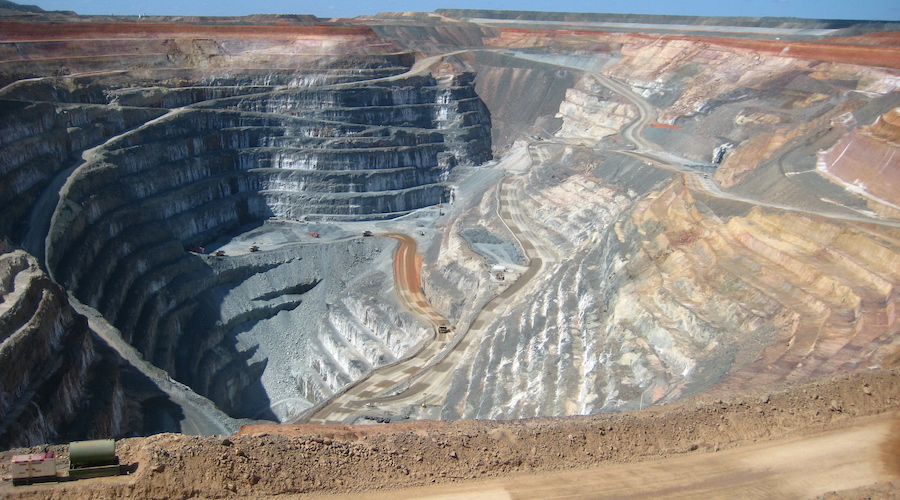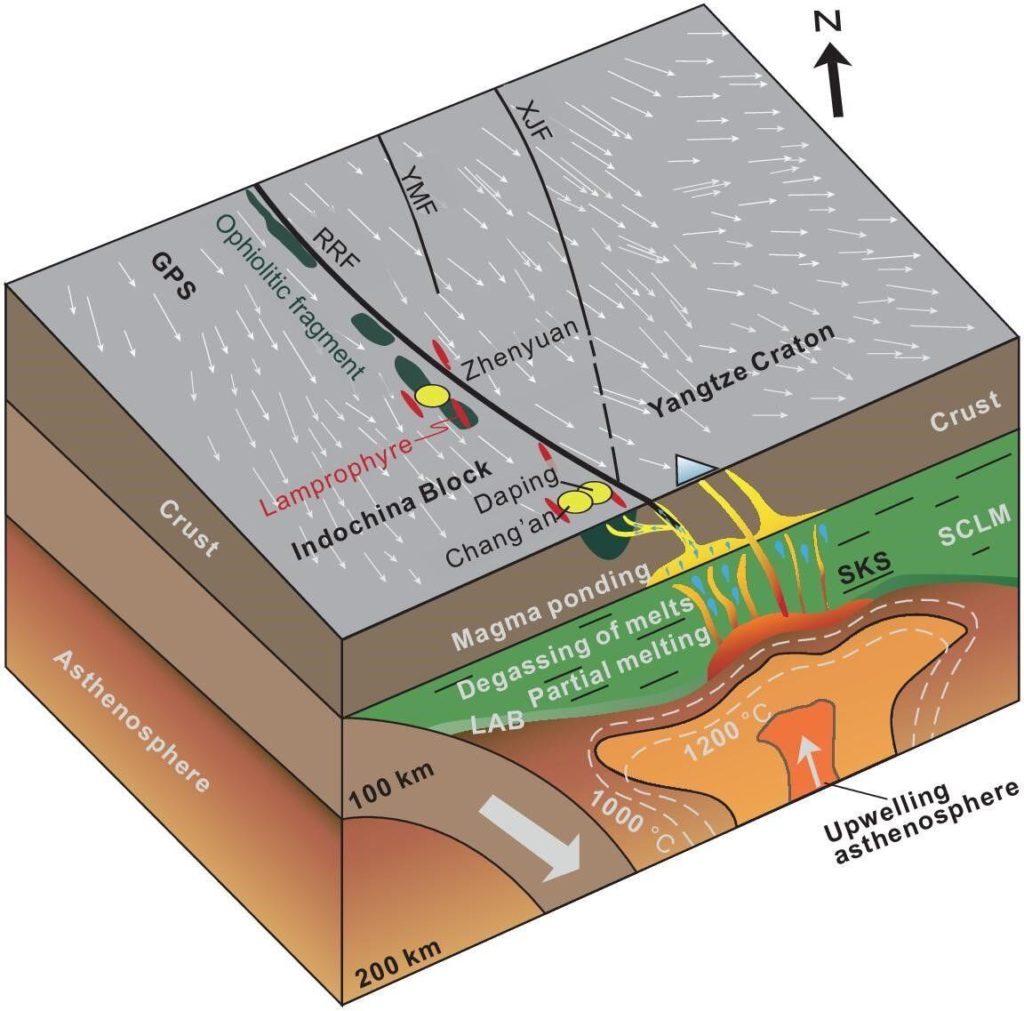Staff Writer | March 28, 2023 |

The Sunrise Dam gold mine built on and orogenic gold deposit in Western Australia.
(Reference image by Calistemon, Wikimedia Commons.)
Chinese researchers have discovered that the lithosphere architecture characterized by crust-mantle decoupling controls the formation of orogenic gold belts.

In a paper published in the journal National Science Review, the scientists explain that orogenic gold deposits account for approximately 30% of the world’s gold resources, but opinions about their mineralization mechanism are mixed.
Such gold deposits were previously thought to have developed extensively in the Precambrian greenstone belt while their gold-bearing fluids were considered to have been generated by the dehydration of crustal rocks during metamorphism. However, there is growing evidence for large amounts of epigenetic orogenic gold deposits on the margins of the Tertiary Craton, where the mineralizing fluids show substantial mantle origin.
To test this hypothesis, the research team chose the Ailaoshan orogenic gold belt on the western margin of the Yangzi Craton, located in the southeastern part of the Tibetan Plateau.
Based on the geological, geophysical, and geochemical data from this gold mining area, the team proposed that lithospheric crust-mantle decoupling on the southeast margin of the Tibetan Plateau controls the formation of orogenic gold deposits and establishes a model for mineralization.
They believe that continental subduction triggered the upwelling of the soft current circle, partial melting of the mantle, and decoupling of the crust-mantle movement.

Chinese researchers have discovered that the lithosphere architecture characterized by crust-mantle decoupling controls the formation of orogenic gold belts.

In a paper published in the journal National Science Review, the scientists explain that orogenic gold deposits account for approximately 30% of the world’s gold resources, but opinions about their mineralization mechanism are mixed.
Such gold deposits were previously thought to have developed extensively in the Precambrian greenstone belt while their gold-bearing fluids were considered to have been generated by the dehydration of crustal rocks during metamorphism. However, there is growing evidence for large amounts of epigenetic orogenic gold deposits on the margins of the Tertiary Craton, where the mineralizing fluids show substantial mantle origin.
To test this hypothesis, the research team chose the Ailaoshan orogenic gold belt on the western margin of the Yangzi Craton, located in the southeastern part of the Tibetan Plateau.
Based on the geological, geophysical, and geochemical data from this gold mining area, the team proposed that lithospheric crust-mantle decoupling on the southeast margin of the Tibetan Plateau controls the formation of orogenic gold deposits and establishes a model for mineralization.
They believe that continental subduction triggered the upwelling of the soft current circle, partial melting of the mantle, and decoupling of the crust-mantle movement.

Control mechanisms of crust-mantle decoupling on orogenic gold systems on the eastern margin of the Qinghai-Tibet Plateau. (Image by University of Science and Technology of China).
“The melt-generated basal magma converges at the crust-mantle decoupling and generates mineralizing fluids, which migrate along supra-crustal fractures to precipitate mineralization in the upper crust,” the team said in a media statement.
In their view, the geodynamic model of crust-mantle decoupling controlling gold mineralization can explain the formation of several large epigenetic orogenic gold provinces.
“The orogenic gold mineralization model proposed in this study can be useful for the integrated geophysical and geochemical investigation of similar gold systems,” the group noted.
The new study is a continuation of the long-term geophysical advanced imaging algorithm development and related research on structural imaging in different regions by Zhang Haijiang’s team at the University of Science and Technology of China.
The group has been working on a series of advanced geophysical imaging algorithms, including the joint imaging algorithms for seismic body wave travel time, surface wave dispersion, and receiver function, and constructed the high-resolution unified velocity model USTClitho1.0 and USTClitho2.0 for the Chinese continental lithosphere.
“The melt-generated basal magma converges at the crust-mantle decoupling and generates mineralizing fluids, which migrate along supra-crustal fractures to precipitate mineralization in the upper crust,” the team said in a media statement.
In their view, the geodynamic model of crust-mantle decoupling controlling gold mineralization can explain the formation of several large epigenetic orogenic gold provinces.
“The orogenic gold mineralization model proposed in this study can be useful for the integrated geophysical and geochemical investigation of similar gold systems,” the group noted.
The new study is a continuation of the long-term geophysical advanced imaging algorithm development and related research on structural imaging in different regions by Zhang Haijiang’s team at the University of Science and Technology of China.
The group has been working on a series of advanced geophysical imaging algorithms, including the joint imaging algorithms for seismic body wave travel time, surface wave dispersion, and receiver function, and constructed the high-resolution unified velocity model USTClitho1.0 and USTClitho2.0 for the Chinese continental lithosphere.
No comments:
Post a Comment